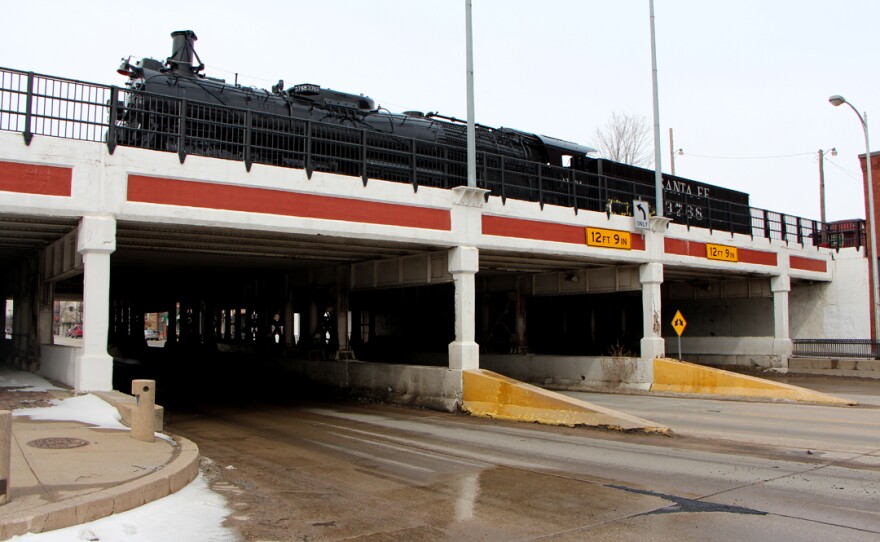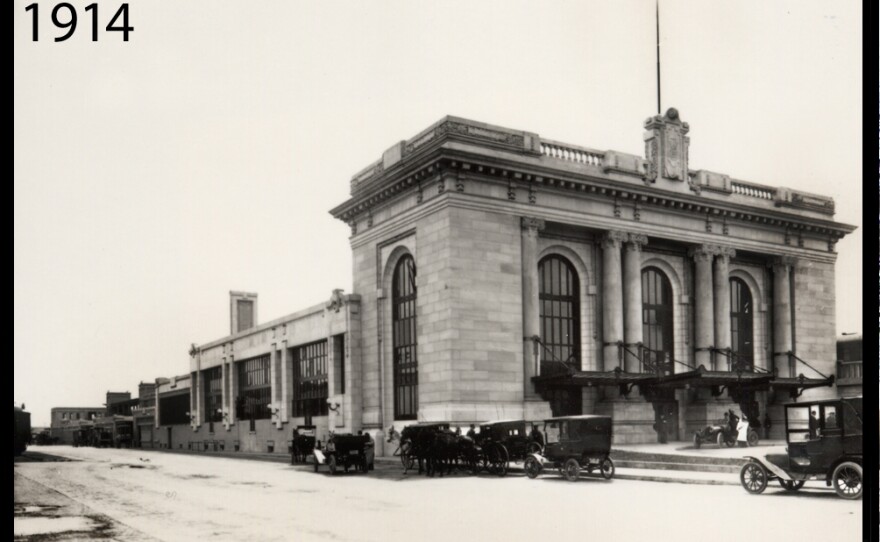Last week, Wichita’s Union Station quietly turned 100 years old. The once bustling stalwart of downtown has been sitting empty since 2007. But now the building has a new owner and there are hopes of reviving the building to the centerpiece it once was.
A Look Back
People once entered Union Station to board trains destined for St. Louis, Chicago and even Los Angeles. The Frisco, Santa Fe and Rock Island provided a luxurious, long-winding glimpse of the American landscape.
Union Stations were built in a number of U.S. cities; they provided a central station where passengers could catch a variety of different trains from different railway companies.

Jay Price, a history professor at Wichita State University, says that the construction of a Union Station in Wichita was significant.
“In many ways, this was the front entrance to the city,” he explains. “In a world before widespread use of automobiles, highways and interstates, the way people got around was by train. And so, if you were to visit Wichita, chances are you’d arrive at Union Station, you would get off, you’d look around…that’s the front of Wichita.”
Once exiting the front lobby, passengers would have immediately been greeted by the large, imposing industrial buildings of what is now called Old Town.
Price paints us a picture.
“You’re on Douglas, you go west, you can go down to the business district, down to the Arkansas River and across – you go east and you’re going up to College Hill and the upscale neighborhoods there,” he describes. “Remember also, this was a world where we had streetcars. Streetcars ran up and down Douglas all the time. So, you go out of the station and you had easy access to the rest of the city.”
The opening of Union Station was an extravagant event. Headlines noted that 400 chickens were ready for frying, bushels of cheese balls had been carefully formed, and that four women were preparing salad for the hundreds of expected guests. In essence, the opening of a Union Station opened the city of Wichita to the rest of the country.

Union Station carried on this way until the late thirties, but passenger trains eventually took a back seat to newer modes of transportation.
According to Price, the automobile industry, as well as the aircraft industry eventually brought the popularity of passengers trains to unsustainable level.
Union Station eventually ceased all passenger service in the late 1970’s. Since that time, it acted as the central offices for Cox Communications, who moved out in 2007; last year, the building was purchased by Occidental Management.
A Look Forward
Chad Stafford, president at Occidental, says his company aims to renovate the 57,000-square-foot building in the coming years, while taking into consideration the building’s historical significance.
“The state and the national park service provide standards of how you need to redo things for historic buildings, and so we’ll be abiding by those,” he said. “And so a lot of that is windows, metals and beautiful stonework that just needs some cleanup.”
Remnants of the previous owners are still scattered throughout the station. Glass walls embossed with the Cox logo help contain little else than exposed Ethernet cords and fallen ceiling tiles.
A large mezzanine, which was built on the second floor to allow for foot traffic, blocks what was once one of the building's most famous features…
“You know, this was called the 'Daylight Station of America' because of this huge bank of east windows,” Stafford explains. “So this was all lit up, all the time. Because of how they had put in this structure, it kind of precludes some of the light from flowing through the space.”
He adds that much of the existing infrastructure could be removed, but in the end, the decision is mostly tenant driven. The building could once again become a corporate headquarters, or he says that it could be used for more public events having to do with Douglas art scene.

Asked if the market is ready for the vast amount of space the building will eventually provide, Stafford said that downtown Wichita is, and has been, on the rise.
“When you look at the shifts in other metro areas around the country, you see instead of people moving out of downtown and getting the McMansions, more and more people are saying, 'I’d like to closer to where I work. A location where I can live, work and play.'”
Occidental Management won’t have to look very far for inspiration, as the remodeled and re-purposed warehouses of Old Town still await future visitors exiting from Union Station’s doors.
Stafford said that he’s also excited for the redevelopment of the Douglas Underpass, which is what elevated the tracks across Douglas. He hopes a cohesive relationship is created, which will connect the station to the rest of downtown.
This story originally aired on Morning Edition on Mar. 13, 2014.















